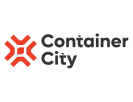Your Trusted Logistics Partner
Aero Freight has solidified its position as a prominent leader within the realm of freight forwarding companies in the Middle East.
Through unwavering dedication, a focus on balanced growth strategies, and leveraging cutting-edge technological tools, our team has successfully cultivated a competitive edge among logistics and shipping service providers.
About Aero Freight
Revolutionizing Global Logistics
We provide end-to-end logistics solutions for your business, combining cutting-edge technology with world-class services.
Explore ServicesCommitment Beyond Cargo
Customs Clearance
Streamlined document processing and import/export compliance for smooth border crossing.
More DetailsSea Freight
Reliable, global shipping solutions for large, bulk, or containerized cargo
More DetailsDistribution & Fulfillment
Efficient distribution and fulfillment solutions with advanced warehouse management.
More DetailsConsulting
Expert analysis and optimization strategies to reduce costs and improve supply chain efficiency.
More Details















